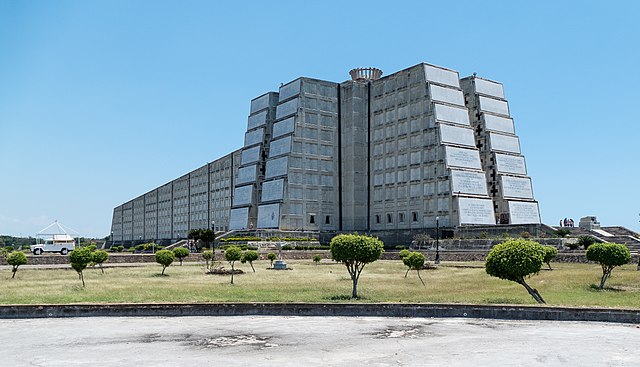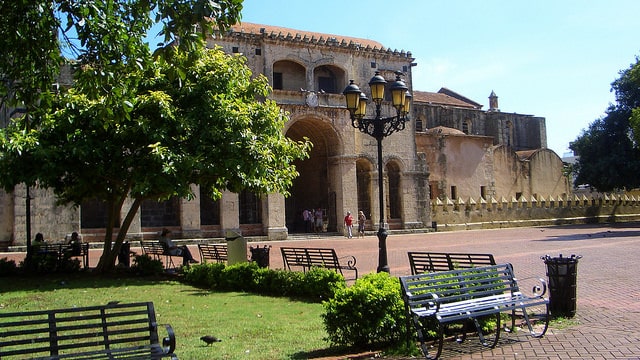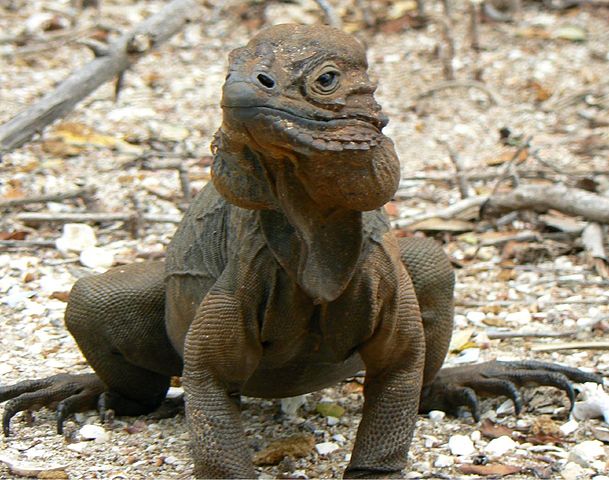Last updated on June 25th, 2024
The Dominican Republic is the 86th most populous country in the world. It has an area of 48,670 sq. km. It is a sovereign state located in the island of Hispaniola, in the Greater Antilles archipelago of the Caribbean region. Santo Domingo is its capital and largest city. Spanish is the official language of the Dominican Republic. The natives or inhabitants of this country are called Dominican. Peso (DOP) is its currency. It has only one bordering country and that is Haiti. With these facts about the Dominican Republic, let us learn more about its history, geography, culture, people, and economy etc.
Interesting facts about Dominican Republic
1. Dominican Republic is the second-largest island in the Caribbean. Wondering which one is the largest? It is Cuba.
2. The country shares the island of Hispaniola with Haiti, making Hispaniola the one island shared by two countries. The Dominican Republic occupies the eastern five-eighths of the island of Hispaniola while the western three-eighths of the island are occupied by the nation of Haiti.
3. Before the formation of the Dominican Republic and Haiti, the island was jointly named Hispaniola. Did you know that Haiti, now the neighboring country of the Dominican Republic, also ruled over the country for nearly 20 years?
4. In 1804 the western third of the island was separated, and a new country—Haiti—was born. The remaining island at that time was known as Santo Domingo. Haiti ruled over Santo Domingo until 1844 when the region became independent and was named the Dominican Republic.

5. Christopher Columbus visited the island on December 5, 1492. Actually, he found the island (accidentally), naming it Hispaniola.
6. Just four years after Christopher Columbus’s arrival, the first university in the Americas, the Universidad Santo Tomás de Aquino, was founded. The university was founded in 1496 in Santo Domingo, Dominican Republic, making it a pioneer in higher education in the Western Hemisphere.

7. On the 500th anniversary of the discovery of the island by Christopher Columbus, a lighthouse—Faro a Colon—was erected in Santo Domingo (the capital city of Dominican Republic).
8. February 27, 1844, is the official independence day of the D.R.
9. Before independence, the country was known as Santo Domingo.
10. The Dominican Republic is the only country in the world to have an image of the Holy Bible on its national flag.
The Dominican Republic on map
11. Street signs and restaurant menus are written in Spanish, which is the country’s official language.
12. People of the country are very loyal to their families.
13. People of the island nation prefer living in joint families. Isn’t this an interesting fact about the Dominican Republic considering that majority of the people like to live in nuclear families these days?
14. The Dominican Republic is the site of the first permanent European settlement in the Americas.
15. Not only the first but also it is the oldest European settlement in the Western Hemisphere. Santo Domingo, the capital of the Dominican Republic, was founded in 1498. Its Zona Colonial is a UNESCO World Heritage site, preserving a rich tapestry of colonial architecture and history.
16. Moreover, the capital of the country–Santo Domingo–is the oldest city in the new world. The capital that was founded in 1496 by Bartholomew Columbus carries a rich history. The first colonial rule by Spanish Crown began here and it is no wonder the first cathedral, university, and municipal building were established here.

17. “Catedral de Santa Maria La Menor” in the Dominican Republic is believed to be the oldest cathedral in the Americas. It dates back to 1540. The cathedral can be visited in the capital city of the country – Santo Domingo. At the front side is Columbus bronze statue facing north as well as Taíno native Anacaona the first person from Hispaniola to understand Spanish.
18. Santo Domingo also had the privilege of being chosen as the cultural capital of the Americas for 2010.
19. Not only this, the whole Colonial City of Santo Domingo is a UNESCO World Heritage Site.
20. The Electric Railway of Santo Domingo, established in 1985, was the first metro system in the Caribbean.
21. Pico Duarte, at 3,098 m, is the highest point in the country. Sir Robert H. Schomburgk was the first climber to the mountain, 1851.
22. D.R. also served as headquarters for the pirates of the Caribbean during the mid 17th century. Pirates recruited people here for raiding Spanish treasure ships.
23. The island country saw difficult days of brutality, conspiracy, and downfall during colonial times. It was affected by a poor economy and political instability even after gaining independence. However, as of today, the country is improving with the help of agriculture and tourism.
24. The Dominican peso (DOP) is the official currency, and its exchange rate is approximately 57 pesos (2023) to 1 US dollar.
25. The Dominican Republic is Latin America’s ninth largest economy followed by Guatemala, with Brazil leading at the top.
26. More than 50% of the land of the island is used for agriculture, while 40% is covered by forests.

27. Coffee, sugar, and tobacco are the island’s main sources of income.
28. Sugar processing is one of the main industries in the country. Established around a sugar mill, the settlement (batey) is a company town made of houses and barracks. It is very close to the fields of sugarcane, allowing convenience for the group of workers living around the labor sites.

29. Over 55% of the global banana market depends on Dominican Republic. Banana production is mainly done in the Northwestern provinces including Dajabon, Valverde, Santiago Rodriguez, and Monte Cristi; as well as the Southern areas of Barahona and Azua.
30. D.R. is also known for producing excellent rum. The country’s rum is manufactured using a unique distillation and aging process that brings pleasant taste and smoothness. They are known as the 3 Bs, for Brugal, Barcelo, and Bermudez. The other two respected and high-quality rums are the Vizcaya and Siboney. Tourists who visit the Dominican Republic get a rum tasting opportunity and it is much cheaper at the sources.
31. The Dominican Republic is known as the “Breadbasket of the Caribbean.”

32. The Dominican Republic is the only country in the world to produce a rare blue variety of the silicate mineral pectolite. Its color changes from white, light-blue, green-blue to deep blue.
33. A large group of people from the Dominican Republic live in the U.S., sending billions of dollars in remittance to their families.
34. The Dominican Republic is a popular destination for weddings and honeymoons. It is also the most visited destination in the Caribbean.
35. An estimated 7.5 million people visit the country annually. It ranks among the top ten most popular tourist destinations in the Americas.
36. The country is also known the world over for its golf courses that are set along the breath taking coast.
37. Beautiful beaches dominate the Dominican Republic. The number of beaches accredited with the Blue Flag certification is more than in any other Caribbean country. The designation simply means that the island meets international standards for cleanliness, environmental safety, and quality.
38. Punta Cana, a renowned tourist destination in the Dominican Republic, draws in approximately 35 million visitors each year, solidifying its status as one of the Caribbean’s most frequented places. The area’s scenic beauty and attractions contribute to its popularity as a sought-after destination for millions of travelers annually.
39. The Amber Museum in Puerto Plata in the Dominican Republic has an amber stone with a prehistoric mosquito preserved inside of it.
40. “Alcazar de Colón” in Santo Domingo is a 500-year-old palace that was once the residence of Diego Columbus, son of Christopher Columbus, and is now a museum showcasing colonial-era artifacts.
41. The “Cueva del Pomier” in the south of the country is home to the largest collection of pre-Columbian rock art – some as old as 2,000 years – in the Caribbean, with petroglyphs and pictographs dating back over 600 meters inside the cave.
42. Mirador del Este Park, declared a national park in 1997, is in Bayahibe and is home to the “Cueva de las Maravillas,” a cave system showcasing ancient Taino Indian rock art.

43. The “Museo de las Casas Reales” in Santo Domingo was built during the Renaissance period in the 16th century. It was once a royal court but is now home to exhibits on colonial life, pirates, and even the Spanish Inquisition.
44. The town of La Romana has a fascinating artist village called “Altos de Chavón,” a replica of a 16th-century Mediterranean village with a 5,000-seat Grecian-style amphitheater.
45. The very first carnival in the Dominican Republic took place in 1520 in Santo Domingo, making it one of the oldest carnivals in the Americas. Introduced by Spanish colonizers, the carnival has evolved over centuries, blending European, African, and indigenous Taino traditions into the vibrant and culturally rich celebration seen today.
46. There’s an annual “Dominican Republic Chocolate Festival” in July each year. The festival celebrates the country’s cacao production, offering chocolate tastings and workshops.
47. There’s an annual “Kite Festival” held in Cabarete, where the sky is filled with colorful kites of all shapes and sizes, creating a mesmerizing display. With 65% of the population depending on money from tourism, this is a very important festival for the country.
48. In Higüey you can find the Basilica of La Altagracia, where pilgrims bring motorcycles to be blessed for protection on the roads. The statue was brought over to the island from Spain in 1500.

49. The Dominican Republic is also home to a threatened species of lizard in the family of Iguanidae – the rhinoceros iguana. The lizard varies in length from 60 to 136 centimetres while their skin color could be steely grey, dark green or brown.
50. There are over 300 bird species within the country borders. The best bird-watching sites are in Barahona and Bahoruco. Examples of endemic birds you cannot find anywhere else except in the Dominican Republic are Hispaniolan Trogon, Bicknell’s Thrush, Hispaniolan Emerald, Broad-billed Tody, and Parakeet.
51. The northern west part of the island, the Bay of Samana (1,600 kilometers long), sees humpback whales that visit the island every year between December and March for mating. Approximately 2,000 of these majestic creatures travel 32 kilometers from the North Atlantic to breed and calve in the warm waters of the bay. There is a sanctuary for whales where the creatures are treated with respect. Tourists can spot both full-grown humpbacks and their newborn calves. Most male humpbacks will be fighting for attention from the females, making it a fun activity to watch. They slap their tails and fins in the air thereby creating thunderous claps.
52. In the area, the island nation is slightly more than twice the size of New Hampshire. It shares a land boundary of 376 km with Haiti.
53. Lake Enriquillo is the largest lake and the lowest elevation in the Caribbean. The lake is found in the southwestern part of the country, about 30 minute-drive from the town of La Descubierta. It covers an area of 375 square km. It is the home of at least 400 species of the American crocodile.
. . . continue reading facts about the Dominican Republic on the next page
